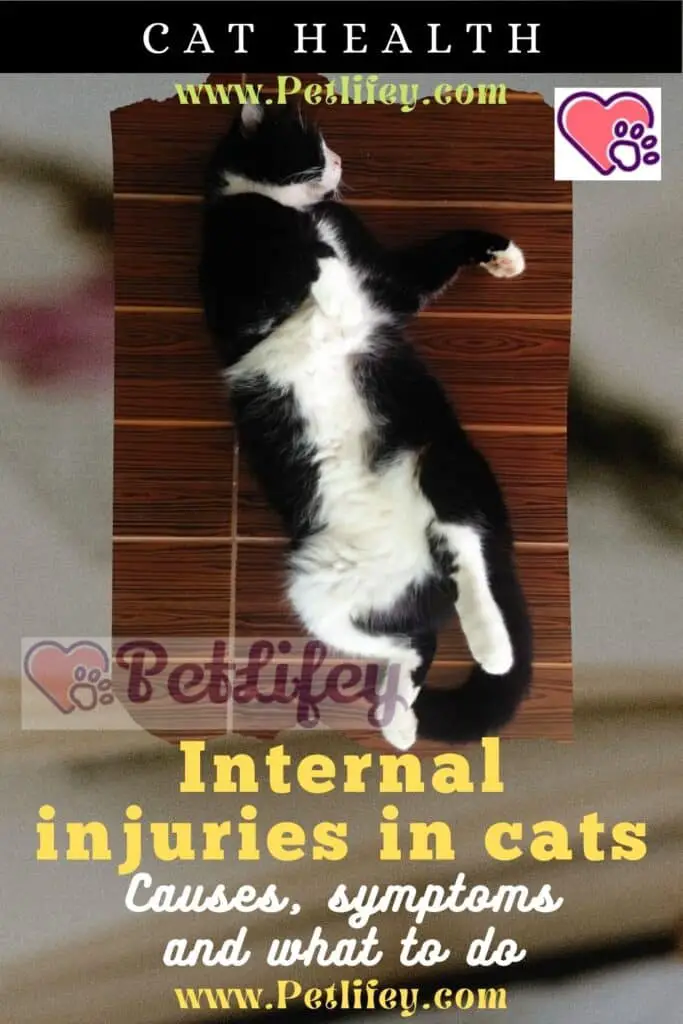
Sometimes cats can fall out of trees, windows or other high places – here’s how to spot any internal injuries in your cat and figure out what to do to help.
Due to their proverbially curious nature, it is not uncommon for cats to find themselves in dangerous situations: they often and willingly climb to high and inaccessible places and sometimes they can fall from considerable heights. If you are not present at the time of the accident, it is likely that you do not have a clear idea of the possible damage that your cat may have suffered: this aspect must be carefully considered, because even if these are rare cases, it is possible to find themselves in the face of internal injuries in the cat that it is essential to know how to recognize in order to save the life of your feline friend.
This is why you need to know the most common causes and symptoms of any injuries and trauma that can cause internal bleeding in the cat: if there is a serious but not visible lesion, in fact, it is essential that the cat be examined by a veterinarian as soon as possible or they could occur decidedly serious consequences, which can lead in the worst cases to the death of the animal.
How to recognize and treat internal injuries in cats
Cats have a real passion for high places: they climb on furniture, on windows, on trees and sometimes, even if they are formidable equilibrists, they can lose their balance and even fall ruinously. A fall from a height could lead to invisible consequences: wounds or internal injuries, which cause bleeding of the organs with even severe internal bleeding.
Knowing how to recognize an internal lesion in your cat could save his life: only if diagnosed in time, in fact, can it be adequately treated. Let ‘s find out what are the most common symptoms and how to intervene in the face of any internal injuries in your cat.
Symptoms of internal injuries and bleeding
When a cat has an internal lesion or a hemorrhage it will show some fairly common and recognizable symptoms, among which we point out:
– lameness or inability to walk,
– cough with bleeding,
– pale (pink to white) gums,
– collapse of the cat,
– swelling in specific, confined areas,
– blood in the cat’s faeces or urine,
– vomiting with traces of blood,
– increased heart rate.
In particular, it is possible to measure the heart rate of a cat by following the instructions given in our in-depth study on the topic of the vital parameters of the cat.
Possible internal injuries in cats
- Sometimes cats can suffer sprains or fractures due to trauma or a fall: in this case, the most frequent symptom is a conspicuous lameness. In other cases, the cat may be completely unable to walk or have severe paw swelling.
- If the cat is bleeding but there is no leakage to the outside, it means that there is ongoing internal bleeding. In this case, the blood loss clears the pet’s gums and the cat is likely to pant loudly. In addition, the cat will most likely present fatigue, lethargy, immobility and fever above 37.5 ° C. If you don’t know how to check, find our article on how to measure cat fever here.
- After an accident it is possible that the cat has a dislocation of the hip, lower jaw or knee: in this case the most common symptoms are respectively a paw that appears shorter than the other, the inability to close the mouth with the teeth out of position or stiff-legged walking. In all of the cases listed above, the affected area will be swollen and painful.
What to do if your cat has internal injuries

If you notice one or more symptoms that could indicate an internal injury in your cat, it is essential to intervene as soon as possible: wrap him in a blanket or towel, reassure him by talking to him in a calm voice and take him to the vet immediately.
If your cat loses consciousness in the meantime, check your breathing and heart rate – you need to be ready to perform the most urgent first aid maneuvers for animals, such as artificial respiration and cardiopulmonary resuscitation. Here you will find a useful overview regarding first aid for cats.






